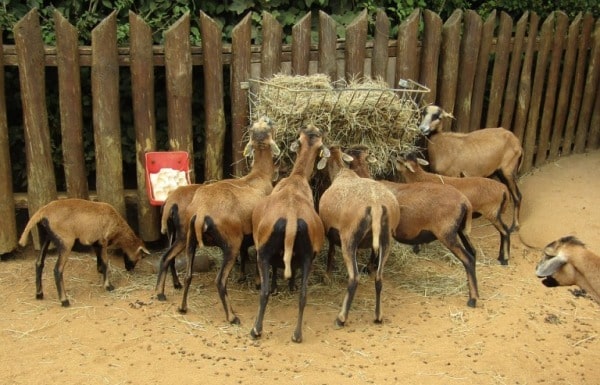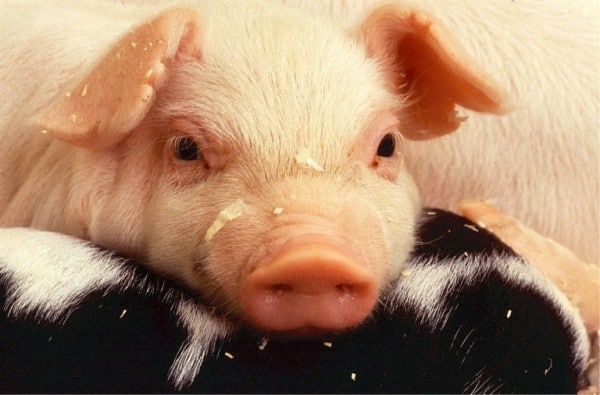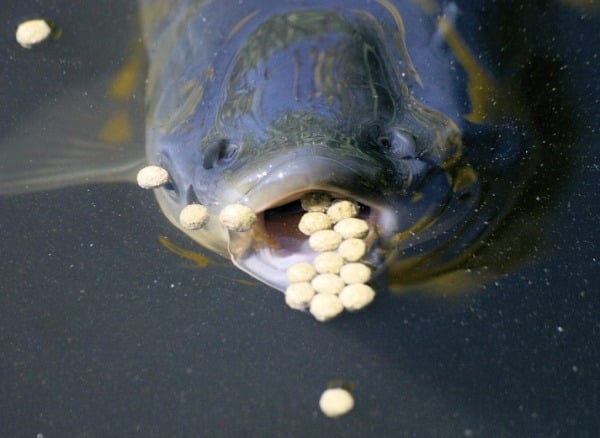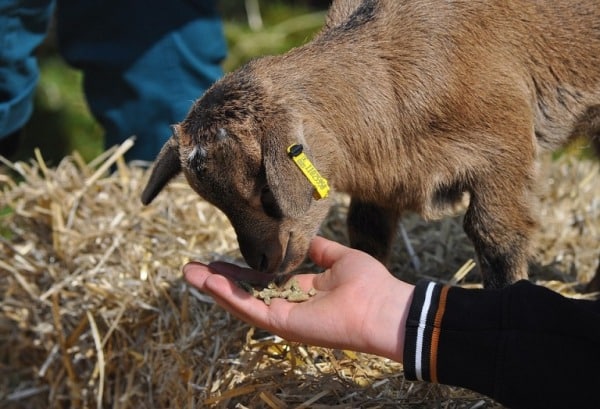Feed Conversion Ratio (FCR) in Livestock Feeding
Today, we are learning the feed conversion ratio formula and the importance of FCR in the livestock.
Feed conversion ratio (FCR) or feed conversion rate is a ratio or rate evaluating of the efficiency with which the bodies of livestock convert animal feed into the desired output.
The feed conversion ratio is an indicator that is commonly used in all kinds of farming, as well as in the field of research. It can give a good indication of how efficient a feed or a feeding strategy can be.
In the context of aquaculture, the F.C.R. is measured as follows:
F.C.R. = Feed given / Animal weight gain.
What is F.C.R.? F.C.R. is the mathematical relationship between the input of the feed that has been fed and the weight gain of a population. The feed conversion ratio is considered by dividing the mass of input by the mass of output. This is important to understand while producing livestock feed and while managing aquaponics gardens.
In this case, the feed conversion ratio represents the number of units of ‘dry’ aqua feed necessary to produce a unit of ‘wet’ fish or crustacean. A more comparable measure of efficiency would be to reduce both the aqua feed and the creation to a dry matter basis. Why is F.C.R. important? The feed conversion ratio is a valuable and powerful tool for the fish farmer. It allows for an approximation of the feed that will be required in the growing cycle. Knowing how much feed will be required, and then allows a farmer to determine the profitability of an aquaculture enterprise. This means that FCR allows the farmer to create wise choices in selecting and using the feed to maximize profitability. It is very important to know the feed conversion ratio formula in livestock farming business.

Maximum yield explains feed conversion ratio:
The feed conversion ratio (F.C.R.) is the ratio of the mass of input from the mass of the output, is unitless value. The technique has been efficient in farms, particularly while dealing with cattle. For dairy cows, the desired output is the milk formed, while for cows raised for meat, the output is the amount of flesh produced. Animals that have a low feed conversion ratio are measured to be efficient users of feed. This type of technique is generally used in all types of farming and is a great way to find out how efficient feed or feeding strategy.
Factors affecting the feed conversion ratio (F.C.R.):
The genetic makeup of the farm animals:
Some farm animals have the natural ability to produce more output from less feed than other animals of the same species. For example, dairy goat breeds can generate much more milk than non-dairy breeds. Commercial egg-laying hens can create far more eggs than the local breeds. These are functions of the modification of the genetic makeup of the farm animals.
Age of the farm animal:
Naturally, young farm animals have a faster growth rate and want a highly nutritious feed, especially feed rich in protein to ensure the buildup of their body tissues; hence, they have a lower feed conversion ratio. This is why some farmers end their production before their flocks get to maturity, so as to take advantage of their lower feed conversion ratio to increase their profit. For instance, selling broiler chicken at 6 to 7 weeks, the sale of catfish fingerlings and juvenile as fish seeds.
Feed Quality:
Animals that are fed a diet that meet their nutritional requirement will have lower FCR (feed conversion ratio). The nutritional requirement varies with the age of the animal. In the case of broilers, there are chick starter and broiler finisher. And for layers, there are chick starter, grower and then layers mash. More complex feeding for layers can also contain developer and pre-lay rations. All these types of feed were formulated to satisfy nutrient requirements at different stages of growth.
Farm animals are supposed to be fed in a method that the feed meets their nutritional requirement; such feed will effect in a lower FCR.
For example, in the case of poultry production; different growth stages have their individual diet to cater to the nutritional requirement of the chicken. Chick starter for chicks through the brooding stage, Grower for rearing stage and Finisher or Layers diet for the adult or egg production stage, in laying chicken. Feeding farm animals to feed that does not meet their nutritional requirement is a waste of time and resources and can serve as a threat to the health and well-being of the farm animal in case of deficiency of essential nutrients.
Read: Importance of Bee Pollination in Agriculture.
Management practices:
This has to do with conditions like environmental conditions and health situation of the farm animal. The management practice deployed determines how farm animals react to different environmental conditions. Irrespective of the management practice on the farm adopted, it has to be a production enhancing environment.
Ventilation and manage ambient temperature are very important. There must be a measure to tackle the variation in seasons; when the ambient temperature is low or during low weather situation, farm animals eat additional to regulate their body temperature, this might increase the FCR. Also, regular sanitation of the environment keeps it clean and protected from pathogens that can deter or serve as a threat to the health of the farm animal.
FCR of Different Farm Animals:
The values given below are the feed conversion ratio for different farm animals;
A feed conversion ratio of cattle is 12.5.
Pigs have FCR range from 3-3.2.

Feed conversion ratio sheep have an average FCR of 4-5 on high concentrate rations, 5-6 on good quality forage and more than 6 on low-quality forage. On straw ration, it can be as high as 40. FCR for older sheep that means 8 months is higher than those for lamb.
Poultry has an average FCR of 1.5.
Crickets have an average FCR of 1.7.
The feed conversion ratio for Tilapia has 1.6-1.8. The feed conversion ratio for Catfish is 1.5-5

Rabbit has an average FCR of 5-3 on a high grain diet, 3.5-4 on forage without grain.
Importance of the FCR:

The FCR importance is as follows;
- Approximate the amount of feed required to feed an animal in its growing cycle
- Determine if rearing a certain kind of animal will be profitable
- Determine if an animal is an efficient feed converter or a very poor feed converter
- Prepare budgets for feed for a total growing cycle
- Evaluate the efficiency of different feeds.
Conclusion
The lower the Feed conversion ratio (FCR) the lesser the feed cost. Animals with low FCR are more efficient in converting feed to output. If you want to reduce the cost of production, always think of ways you can reduce the FCR.
That’s all folks about feed conversion ratio formula in livestock. Happy farming!.
Read: Ideas for Urban Gardening.